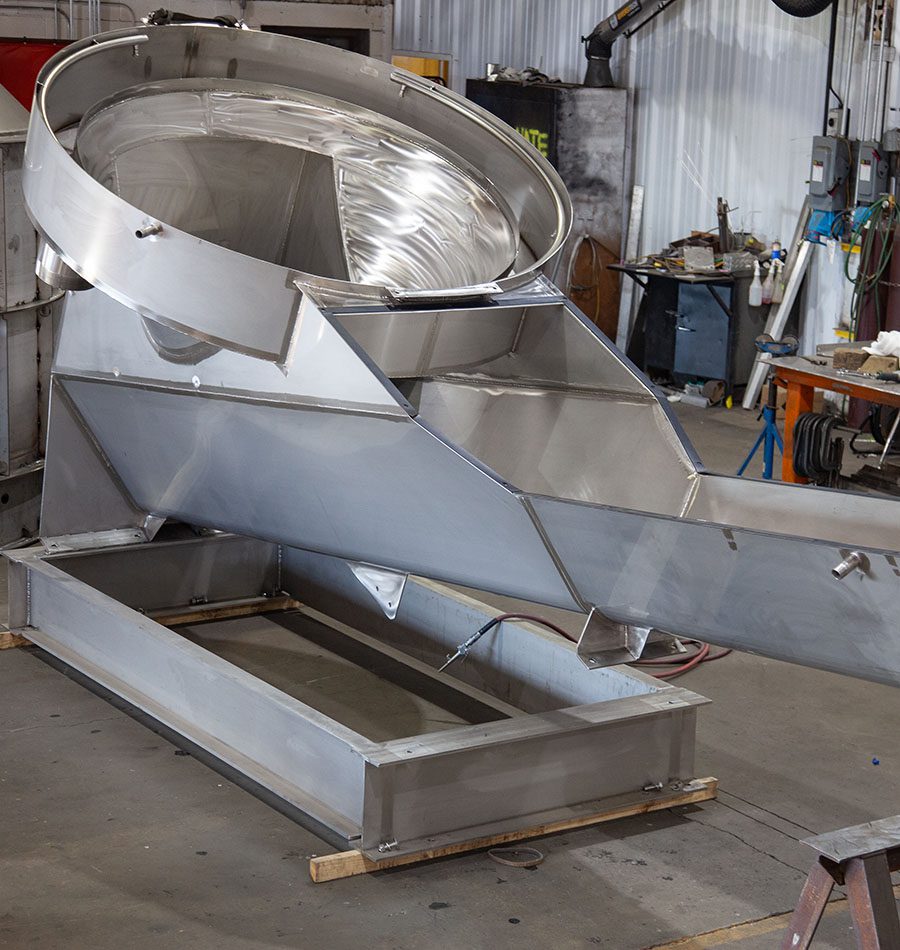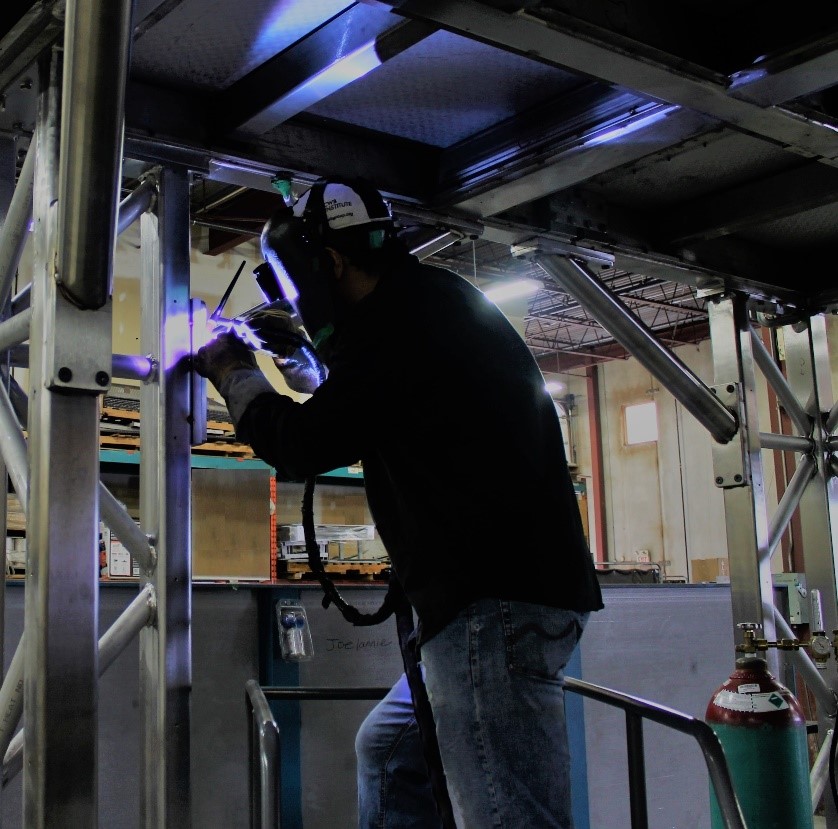Cutting-edge Trends in Steel Construction: Enhancing Toughness and Accuracy
In the world of steel construction, the quest of toughness and precision has brought about a wave of cutting-edge patterns that are improving the sector. From advancements in welding technologies to the assimilation of robotic automation in fabrication processes, the landscape of steel manufacturing is progressing rapidly. High-strength alloy growth, paired with the application of 3D modeling and simulation software, is pushing the boundaries of what is attainable in terms of structural integrity and precision. The growing emphasis on lasting methods in steel manufacturing is not just driving performance yet likewise promoting a much more environmentally aware approach to construction. These fads are not simply shaping the here and now but likewise preparing for the future of steel fabrication, guaranteeing more improvements in sturdiness and accuracy.
Advanced Welding Technologies
In the realm of steel fabrication, the adoption of innovative welding technologies has considerably transformed the market's technique to attaining premium quality and accuracy in architectural welds. Advanced welding modern technologies, such as laser light beam welding and rubbing mix welding, have actually arised as game-changers in the area. Laser beam of light welding utilizes a focused laser beam to sign up with steel elements with exceptional precision and rate, making it excellent for detailed styles and slim materials. On the various other hand, friction stir welding develops unbelievably solid bonds by mechanically intermixing the molecules of the products at the joint, eliminating the need for thawing the metal. These innovations supply countless benefits, consisting of minimized heat-affected areas, minimal distortion, and improved mechanical buildings in the welded joints. By leveraging these sophisticated welding strategies, steel makers can elevate the toughness, strength, and precision of their structural welds, meeting the increasingly demanding demands of modern construction jobs.
Robot Automation in Construction
Embracing robot automation has come to be a keystone of modern steel construction methods, simplifying processes and enhancing efficiency throughout the sector. Robots are reinventing the means steel components are made, using unparalleled precision and speed while lowering human error. These automated systems can take care of repetitive tasks with regular accuracy, bring about greater high quality final product.
One key advantage of robotic automation in steel fabrication is the ability to function around the clock without tiredness, substantially increasing production result. This constant operation minimizes downtime and speeds up task timelines, eventually saving prices for manufacturers. Additionally, robots can be set to do complex tasks that may be tough or unsafe for human workers, improving security in the work environment.
Moreover, robot automation enables smooth combination with other electronic modern technologies, such as computer-aided layout (CAD) software application and Internet of Things (IoT) systems (steel fabrication melbourne). This interconnected method improves interaction in between various stages of construction, enhancing process and making sure real-time tracking and control. As the steel construction industry continues to evolve, robot automation sticks out as a transformative force driving efficiency and precision in producing review procedures

High-Strength Alloy Advancement
The improvement of high-strength alloy development in steel fabrication is improving the industry's strategy to boosting material sturdiness and performance. High-strength alloys are crafted to show superior mechanical residential properties, such as enhanced tensile strength, durability, and corrosion resistance contrasted to standard steel qualities. By integrating these sophisticated alloys right into construction procedures, producers can create elements that hold up against greater anxiety degrees and extreme environments, causing more resilient and trusted final product.
One trick benefit of high-strength alloy development is the ability to minimize material density without compromising architectural stability. This not only results in lighter-weight parts but also contributes to cost financial savings and enhanced effectiveness in fabrication and assembly processes. The enhanced strength-to-weight proportion of these alloys allows for the design and construction of structures with higher load-bearing capacities while lessening general weight.
3D Modeling and Simulation Software Program
Developments in steel fabrication procedures have been dramatically driven by the assimilation of advanced 3D modeling and simulation software program tools. These tools allow makers to produce detailed digital models of their jobs, allowing them to picture the last item with precision prior to any physical job starts.

Lasting Practices in Steel Production
Including lasting methods into steel manufacturing processes is essential for lessening environmental impact and making certain my link lasting resource schedule. One key sustainable technique is the fostering of energy-efficient modern technologies to decrease greenhouse gas discharges during the steel manufacturing procedure. This consists of using renewable resource sources, such as solar or wind power, check that to power steel plants and applying energy-efficient tools to maximize energy use.
Another vital element of sustainable steel manufacturing is the responsible sourcing of raw products. This entails making certain that the iron ore and other resources made use of in steelmaking are acquired from eco friendly and moral resources. By promoting transparency in the supply chain and adhering to strict ecological requirements, steel makers can reduce the negative influences of resource extraction on regional ecosystems and areas.

Conclusion
Finally, the innovative trends in steel construction such as sophisticated welding innovations, robotic automation, high-strength alloy advancement, 3D modeling and simulation software program, and sustainable techniques are boosting the longevity and precision of steel items. These developments are transforming the steel fabrication industry by boosting quality, sustainability, and effectiveness. It is clear that the future of steel manufacture lies in embracing these advanced technologies to satisfy the needs of contemporary building and construction and production industries.
In the world of steel manufacture, the search of resilience and precision has actually led to a wave of cutting-edge patterns that are reshaping the industry.In the world of steel construction, the fostering of advanced welding innovations has actually significantly revolutionized the industry's approach to achieving exceptional top quality and precision in structural welds. As the steel fabrication market continues to advance, robot automation stands out as a transformative pressure driving performance and accuracy in manufacturing processes.
Moreover, reusing and reusing steel scrap and waste materials play a considerable role in improving the sustainability of steel production. steel fabrication melbourne.In conclusion, the cutting-edge fads in steel fabrication such as sophisticated welding technologies, robotic automation, high-strength alloy growth, 3D modeling and simulation software program, and lasting practices are boosting the longevity and accuracy of steel items